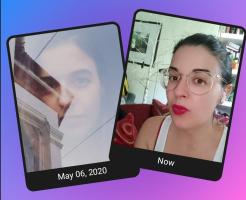Copy Link
Add to Bookmark
Report
Current Cities Volume 03 Number 06

_Current_Cites_
Volume 3, no. 6
June 1992
Library Technology Watch Program
University of California, Berkeley
Edited by David F.W. Robison
ISSN: 1060-2356
Contributors:
Teri Rinne, Vivienne Roumani, Lisa Rowlison, Mark Takaro, Roy Tennant
>From the Editor: many of the articles cited in this issue were
difficult to categorize as they fit into more than one section,
so please be sure to look around this issue for topics that
might interest you. - DR
Electronic Publishing
Bennett, Scott and Nina Matheson "Scholarly Articles: Valuable
Commodities for Universities" The Chronicle of Higher Education (May
27, 1992):B1-B3. Bennett and Matheson introduce a proposal to regard
scholarly journal articles as work done for hire. They offer this
proposal as a solution to the problem of protecting scholarly
communication by eliminating copyright restrictions for non-profit
libraries and reducing journal costs. - VR
Campbell, Robert "The Commercial Role in Journal Publishing: Past,
Present and Future" LOGOS 3(1) (1992):27-33. With this article
(essentially a reply to Ann Okerson's article, "Back to Academia?
The Case for Universities to Publish Their Own Research" LOGOS
2(2) (1991):106-112), the Managing Director of Blackwell Scientific
justifies the role and intentions of commercial publishers. Campbell
maintains that many librarians' views of commercial publishers are
born of an either naive or incomplete understanding of the publishing
process. Most of his argument centers around the economic
circumstance of publishing (a great motivator and causal influence).
Campbell suggests that the development of the electronic journal
will occur in increments, determined by economic feasibility in terms
of demand and technological development. He concludes that the
development of electronic publishing should bring publishers,
academics, and librarians together instead of widening the chasm
between the camps. With such words so easily spoken, it will be
quite interesting to see what sort of collaborative relationship
actually develops between librarians and commercial publishers as
electronic publishing matures. - LR
The special double issue of Serials Review 18(1-2) (1992) contains
nearly 30 articles on topics of direct interest to electronic
publishing. Titled "Economic Models for Networked Information"
the issue covers topics of copyright and licensing, pricing and
costs, etc. This month's and next month's issues of Current Cites
will contain abstracts of selected articles from the special issue
of Serials Review. It should be noted that each article in the
issue is well worth reading. As a whole, the issue presents the
reader with a well rounded perspective of the timely matters
surrounding electronic publishing.
o Getz, Malcolm "Electronic Publishing: An Economic View" pp.
25-31. Getz presents a discussion contrasting the costs and
values of publishing (scientific publications) in the print
and electronic mediums. This economic view includes a
description of market factors and the role of government
pertinent to electronic publishing. This stimulating article
presents a concrete picture of the interacting forces (the
elements of value: readability, durability, portability, etc.;
and costs of editing, production and distribution) which will
prove to be determining factors in the future of electronic
publishing. - LR
o Jensen, Mary Brandt "Making Copyright Work in Electronic
Publishing Models" pp. 62-65. One of the most onerous
processes inherent to the success of electronic publishing will
be the development of copyright law which is both comprehensive
and fair. In this article, Jensen provides a well-written and
detailed look at several different types and applications of
copyright licenses. She concludes with a description of one
potentially effective licensing model for electronic
information: a hybrid negotiated compulsory license. - LR
o Lynch, Clifford "Reaction, Response, and Realization: From the
Crisis Scholarly Communication to the Age of Networked
Information" pp. 107-112. Writing the concluding article for
this special issue, Lynch notes that while it is clear that
scholarly communication is undergoing massive change, if not a
revolution, it is hard to see what the result will be. Among
other issues, Lynch discusses copyright and the actual
migration of scholarly communication to the networked world.
- DR
o Okerson, Ann "The Missing Model: A 'Circle of Gifts'" pp. 92-96.
What Okerson proposes here is the formalization of the model of
electronic publishing that is already happening on a fairly
large scale already (with this journal being a case in point).
The Circle of Gifts model is based on the idea that "information
published is owned by the scholars, learned societies, colleges,
universities, and research institutions who have funded and
created it." While there is no marginal cost of such
publication to the user or publisher, the larger institution
does pay for the access to the electronic arena. This model,
which fosters widespread scholarly communication will need to
be subsidized in the future if it is to remain viable. - DR
Networks and Networking
Baczewski, Philip "Bitnotes: Does BITNET Have a Future?" NetMonth 40
(June 1992). While some are saying that BITNET is a thing of the
past, Baczewski argues otherwise. While some aspects of the system's
technology may be behind that of the Internet, BITNET provides unique
services to a number of institutions. It is also a system that is
evolving to adapt to the new net environment (BITNET II for example).
So don't count BITNET out yet! - DR
Kahn, Robert "National Information Infrastructure Components" Serials
Review 18(1-2) (1992):85-87. Kahn writes that the NII will eventually
include (very fast) multimedia capability, a National Digital Library,
National Knowledge Banks, and an electronic system for transacting
business. He also argues that it is desirable that the NII be capable
of evolution, be built upon the current system, and support users in
obtaining crucial information. Kahn makes an interesting point when
he explains that he envisions search "agents" (software) that will
help the user formulate a strategy and "brokers" (people) who will
help to execute the strategy "in the most effective manner." - DR
Kesselman, Martin "BIDS and Networked Databases vs. CD-ROM" Wilson
Library Bulletin 66(9) (May 1992):84-85, 132. Kesselman considers
whether the increasing use of networked databases among large, though
specific, user groups will spell the demise of CD-ROMs. Using the
example of the BIDS system in the UK, Kesselman examines both the
ease-of-use issues and the economics of providing networked databases.
- DR
Marx, Gary T. "Techno-Fallacies of the Information Age" EFFector
ONline 2(10) (June 9, 1992):[8-11]. Marx addresses some of the social
issues related to the increasing pervasiveness of technology in our
lives, especially where privacy is concerned. While much of this is
old hat to librarians, it is always worthwhile to revisit this issue
as the information age progresses. The article also includes a list
of other articles by the same author. - DR
U.S. Congress. Senate. "GPO Gateway to Government Act of 1992."
102nd Cong., 2nd sess., S. 2813. Posted on PACS-L@UHUPVM1.BITNET
(June 17, 1992) by James Love. This bill (if it becomes law) would
"Establish in the Government Printing Office an electronic gateway
to provide public access to a wide range of Federal databases
containing public information stored electronically." The bill
stipulates that the information should disseminated "through a
wide range of electronic networks, including the Internet and the
National Research and Education Network" and that depository
libraries be permitted "to connect to, access, and search and
retrieve information through the GPO Gateway without charge...."
- DR
Optical Disc Technologies
Fox, Barry "CD Makers Perform in Unison to Stop the Rot" New Scientist
134(1815) (April 4, 1992):19. This article describes new test
procedures European CD manufacturers are implementing that may
provide archival-quality compact discs. The procedure involves
"putting CDs in an environmental chamber, raising the temperature from
20 degrees C to 48 degrees C in half an hour, leaving the temperature
steady for 12 hours, and then cycling down again. This goes on, at a
relative humidity of 95% for 4 weeks." This procedure is slated to
become a Philips Red Book standard. Bert Gall, General Manager of
Optical Systems at Philips, optimistically predicts that CDs that meet
the new standard will enjoy a life span of more than a thousand years.
- TR
Nipp, Deanna and Salwa Shamy "CD-ROM Troubleshooting Manual: Support
for Reference Desk Librarians" RQ 31(2) (Spring 1992):339-347. The
authors present a solution to the problem of daily CD-ROM equipment
maintenance at the reference desk in the form of developing a CD-ROM
Troubleshooting Manual. Using a model developed for the Library of
Science and Medicine at Rutgers University, the manual is based upon
"seven steps fundamental to writing good technical documentation and
includes instructions for resolving problems like removing paper jams,
replacing ribbons, and rescuing CD-ROM discs from floppy disk drives."
- TR
General
Shneiderman, Ben. Designing the User Interface: Strategies for
Effective Human-Computer Interaction. Second edition. Reading,
MA: Addison-Wesley, 1992. This revised and expanded second edition
of Shneiderman's essential book on user interface design represents
a significant update to a key resource. The first edition, published in
1986, was one of a very few books of its kind that was accessible to
a wide audience. This updated version is likely to further cement the
position of this work as a must read for those interested in user
interface design. - RT
"Storage Buyer's Guide" MacUser 8(7) (July 1992) 58 p. This MacUser
Buyer's Guide includes articles reviewing both 3.5-inch and 5.25-inch
magneto-optical drives. The former article includes a sidebar offering
a rare glimpse inside an m-o drive, accompanied by an effective "How
it Works" graphic and explanation. - TR
-------------------------------------------------------------------
Current Cites 3(6) (June 1992) ISSN: 1060-2356
Copyright (C) 1992 by the Library, University of
California, Berkeley. All rights reserved.
All product names are trademarks or registered trademarks of
their respective holders. Mention of a product in this publication
does not necessarily imply endorsement of the product.
Copying is permitted for noncommercial use by computerized
bulletin board/conference systems, individual scholars, and
libraries. Libraries are authorized to add the journal to their
collections at no cost. This message must appear on copied
material. All commercial use requires permission from the editor,
who may be reached in the following ways:
drobison@library.berkeley.edu // drobison@ucblibra // (510)642-7600
-------------------------------------------------------------------






















